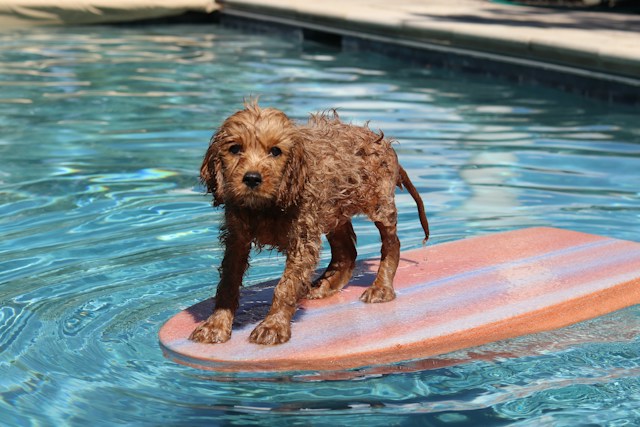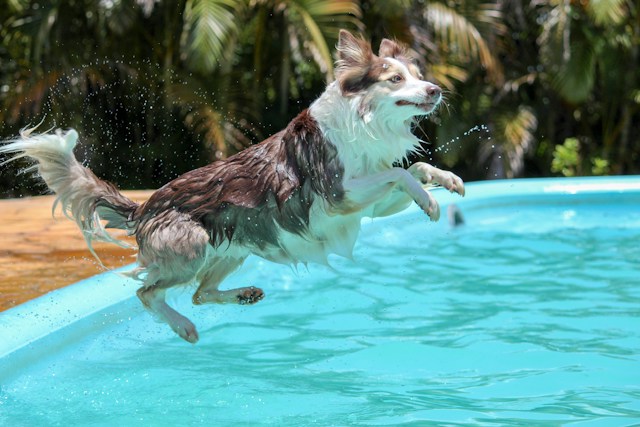Introduction:
As the weather warms up, many dog owners eagerly embrace the idea of taking their furry friends for a refreshing swim. While dogs often take naturally to the water, ensuring their safety is paramount. Whether your pup is a seasoned swimmer or a water enthusiast in training, these eight swimming safety tips will help you create a fun and secure aquatic experience for your beloved canine companion.
- Know Your Dog’s Comfort Level:
Before diving into deeper waters, assess your dog’s comfort level with swimming. Some breeds are natural swimmers, while others may need more encouragement. Gradually introduce your dog to water in a calm and controlled environment, gauging their reactions and building positive associations.

- Invest in a Canine Life Jacket:
Just like humans wear life jackets for safety, dogs can benefit from them too. Invest in a properly fitted canine life jacket to provide buoyancy and support, especially if your dog is new to swimming or has a lower buoyancy level. Look for jackets with adjustable straps to ensure a snug fit.
- Supervise at All Times:
Never leave your dog unattended near water, even if they are confident swimmers. Accidents can happen quickly, and constant supervision is key to preventing mishaps. Be vigilant, especially in unfamiliar or potentially hazardous environments, and ensure your dog stays within safe swimming zones.

- Choose Dog-Friendly Swimming Locations:
Not all bodies of water are suitable for dogs. Choose swimming locations with calm currents, clear water, and minimal hazards. Avoid areas with strong tides, fast-flowing rivers, or potentially harmful aquatic life. Familiarize yourself with the area’s rules and regulations to ensure a safe and enjoyable experience.
- Teach Exit Strategies:
Help your dog learn how to exit the water safely. Whether it’s a gently sloping beach, a designated exit point, or a ramp in a pool, familiarizing your dog with how to leave the water reduces the risk of fatigue or panic. Practice exit strategies during playtime to reinforce a positive association.

- Hydration Matters:
Swimming can be an intense workout for your dog, leading to increased thirst. Provide fresh water before and after swimming sessions to keep your pup hydrated. Avoid letting them drink from the swimming area, as it may contain harmful bacteria or chemicals.
- Watch for Signs of Fatigue:
Just like humans, dogs can experience fatigue while swimming. Keep an eye out for signs such as slowed movements, excessive panting, or a change in swimming style. If your dog shows signs of fatigue, encourage them to take a break and rest. Puppies, elderly dogs, and those with certain health conditions may tire more quickly.
- Rinse and Dry Thoroughly:
After each swim, rinse your dog with fresh water to remove chlorine, salt, or other potential irritants. Dry their ears carefully, as moisture can lead to ear infections. Pay attention to their paws, ensuring they are free of debris or irritants that could cause discomfort.
Conclusion:
Swimming is not only a fantastic way for your dog to cool off but also an enjoyable activity that strengthens the bond between you and your furry friend. By incorporating these swimming safety tips into your aquatic adventures, you can create a positive and secure experience for your dog, ensuring that every splash is met with joy and safety.
